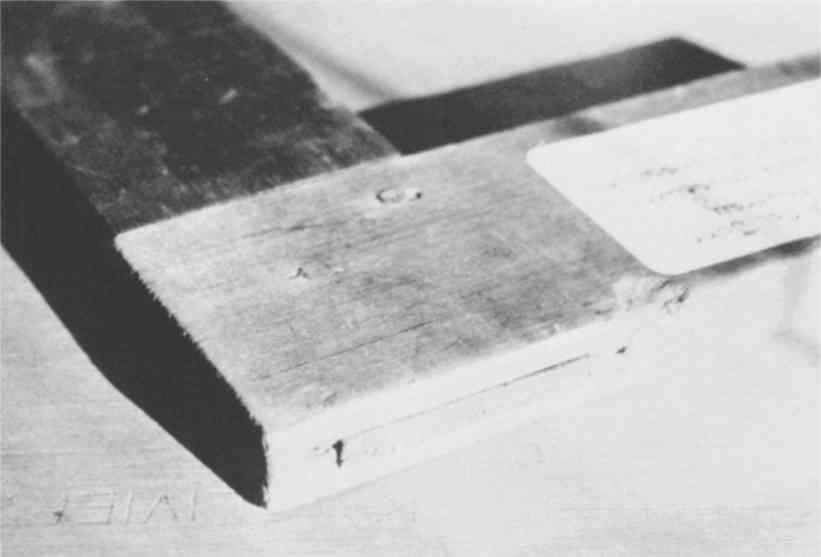JOHN SINGLETON COPLEY'S PORTRAITS: A TECHNICAL STUDY OF THREE REPRESENTATIVE EXAMPLESJ. William Shank
4 MATURE AMERICAN WORKS (ca. 1761–1774)COPLEY'S MATERIALS DURING this successful period in his career came, at least in part, from England. An order for supplies, dated 6 June 1771,17 (and a corresponding in voice, dated 17 August 1771)18 from Henry and Thomas Bromfield, London, includes the following items, among others: poppy oil, brushes, bladders (presumably for paint storage), and “hog hair tools of the smallest size for portraits.” 4.1 NICHOLAS BOYLSTON (1767)The portrait of Nicholas Boylston (1716–1771) in the collection of Harvard University (H-90) represents Copley at the peak of his career in America. Executed in 1767, it is one of three portraits of the same sitter in the identical pose. Boylston, a Boston merchant, is shown in an informal dressing gown and without a powdered wig: his shaved head is partially covered by a stylish turban (Fig. 2).
A quantum leap in the sophistication of painting style between this portrait and that of Dorothy Murray, dated only eight years earlier, is immediately apparent. Both the flesh and the draperies are treated with a startling realism. The lush darkness of the shadows and the brilliance of the light tones combine to create intensely volumetric forms without the intrusion of “atmosphere” between the sitter and the viewer. Only 4.1.1 AUXILIARY SUPPORT:While the Nicholas Boylston portrait has been mounted on a solid aluminum support, and no information is available regarding its original attachment to an auxiliary support, another painting of the same period yields further information about Copley's stretchers. A portrait of John Murray, of about 1763, was treated at the Center for Conservation and Technical Studies by painting conservator Elizabeth Jones19 in 1967. The painting, which had never been lined, was attached, with hand-wrought nails, to a wooden strainer of the tongue-in-groove, butt-end type, with its corners held fast by wooden dowels (Fig. 3).
4.1.2 SUPPORT AND GROUND:The linen canvas of the Boylston portrait is of an uneven weave (plain type), with about fourteen threads per centimeter. The white ground layer is thinly applied, allowing the texture of the support to show through. (Copley evidently was in the habit of smoothing his ground layer or layers with pumice: see his letter to Henry Pelham, 14 March 1775.20) X-ray diffraction analysis proves its composition to be mostly calcite, with some lead white. Analysis of the aforementioned John Murray portrait (New Brunswick Museum, St. John, New Brunswick) shows that the ground layer extended to the margins of the original tacking edges, indicating the strong likelihood that the canvases were pre-primed.21 X-ray diffraction analysis of the John Murray ground reveals a composition similar to that of Nicholas Boylston. While the following list does not indicate whether or not the canvases were pre-primed, or even pre-stretched, it does make clear that Copley ordered his canvases pre-cut from London merchants during his heyday in America. The following is a partial invoice of materials from “Henry and Thos. Bromfield in the Thames, London,” dated 17 August 1771:22
(Note: Ralph Mayer's Dictionary of Art Terms & Techniques, New York, Thomas Y. Crowell Co., 1969, states that the following were standard dimensions for portrait-size paintings in England and America: kit-cat, 28″ � 36″; half length, 40″ � 50″; and three-quarters, 25″ � 30″.) The above invoice also includes references to both “3 oz. Italian white chalk” and to “a keg of grod. (i.e. ground) white lead”.23 These materials correspond to the findings of the technical analysis of the ground layers of both paintings from this period. 4.1.3 PAINT LAYER:Despite the stylistic advances which separate Nicholas Boylston from Copley's works of the 1750's, his technique is remarkably the same. Cross-section analysis of one of the areas most likely to be a glaze, the darker green pattern of the sitter's dressing gown, clearly shows a single layer of blue-green paint over the white ground. The cross-section taken from the background seascape shows a similarly simple layering of ground and paint. Light and dark areas of flesh and draperies are laid in side-by-side rather than one above the other. Layering is limited to obvious areas, such as the yellow title over the red book cover under the sitter's proper left arm. BINDING MEDIUM: The medium appears to be traditional oil, most probably poppy or walnut oil. PIGMENTS: Among the pigments found, or estimated, to be present in the Nicholas Boylston portrait were the following: lead white, calcite, vermilion, Prussian blue, (indigo?), and charcoal black. Organic reds, yellows, and browns were also used. (Please see Table 2 for further information.) Table 2 NICHOLAS BOYLSTON, Harvard University, H90 50″ (h) � 40″ (w); 127 cm (h) � 102 cm (w) 4.1.4 SURFACE COATING:While it is impossible, from the present state of any of the paintings at hand, to judge the nature of Copley's original surface coatings, which have long since been removed and replaced, some clues are left behind in contemporary writings regarding his varnishes. While still travelling in Italy in 1775, Copley writes home to his half-brother, “My spirit varnish is unknown to them (i.e. the English painters).”24 The varnish referred to is probably the same one described in a letter from Copley to an artist friend, Ozias Humphry, which was later recorded in Humphry's memo book as “Mr. Copelys Varnish.”25 It reads as follows:
|

